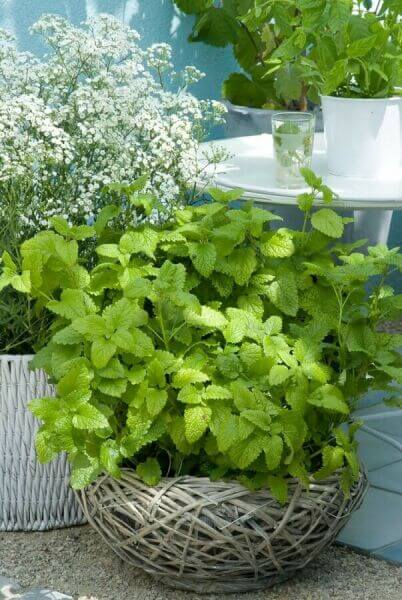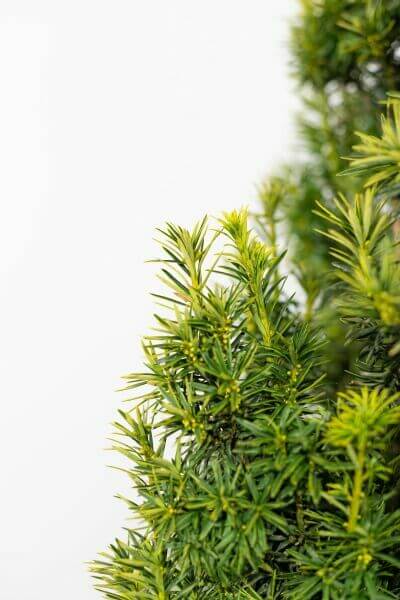Low-growing Hedging Plants For Borders
Enhance your garden's appeal with rich hedge varieties such as Yew (Taxus), Thuja, Laurel, Photinia, and Bamboo, celebrated for their structural stability and ecological benefits.
Yew and Thuja supply evergreen coverage and winter season durability, while Laurel offers quick growth and broad, aromatic leaves.
Photinia adds seasonal appeal with its lively red foliage, and Bamboo lends a low-maintenance, tranquil ambiance.
These hedges improve air quality, reduce sound, and develop tranquil, private areas.
Correct planting, spacing, and maintenance guarantee energetic growth and eco-friendly harmony.
Check out how these lavish varieties can elevate your garden's appeal and well-being.
Key Takeaways
Change Your Garden With Lush Hedge Ranges
- Select Yew for its dense, evergreen growth and unequaled longevity.
- Choose Laurel for its fast development and broad leaves, making sure fast personal privacy.
- Select Photinia for its lively seasonal foliage, which turns a striking dark red.
- Utilize Bamboo for a low-maintenance, winter-hardy hedge with aesthetic appeal.
- Space plants 2-3 per meter and prune routinely for ideal development and health.
Popular Hedge Plants
When changing a garden with lavish hedge ranges, it's important to think about popular hedge plants such as Yew, Thuja, Laurel, and Photinia due to their special characteristics and benefits.
Yew (Taxus) is highly esteemed for its durability and thick, green development, making it a prime option for sustaining landscapes.
Thuja is kept in mind for its evergreen foliage and robust winter season durability.
Photinia adds seasonal vibrancy with red leaves that darken in time, producing dynamic visual appeal.
Laurel offers quick development and fragrant, broad leaves, suitable for quick privacy.
Additionally, Bamboo is an excellent option for atmosphere, offering a low-maintenance, winter-hardy choice that boosts the garden's visual with its elegant, swaying walking canes.
These choices deal with a variety of horticultural needs and choices.
Benefits of Garden Hedges
Garden hedges offer a wide range of advantages, making them an important addition to any landscape. These natural barriers are economical to implement and offer significant wind defense, improving air circulation and adding to noise decrease. The dense foliage of hedges like Thuja and Beech ensures personal privacy by blocking exposure, producing a secluded and peaceful environment.
Hedges also play a vital role in microclimate regulation, offering a stable environment that promotes plant development and reduces temperature level changes. Their detailed leaf structures filter toxins, improving air quality and adding to a healthier garden community.
Moreover, hedges excel in sound reduction, absorbing and deflecting acoustic waves to lower ambient sound levels. This double functionality of offering both acoustic and visual privacy improves the total harmony and aesthetic appeal of any garden.
Planting and Maintenance Tips
For an effective hedge, careful preparation of the planting location is crucial. Guarantee the soil has appropriate pH and drain to support strong root advancement.
Space the plants appropriately for the selected types. Water the hedge regularly throughout its preliminary development stage, changing as required with seasonal modifications.
Implement a systematic pest control and disease prevention strategy, using organic or chemical treatments when necessary. Regularly inspect for aphids, mites, and fungal infections.
Apply mulch to retain wetness and reduce weeds. Seasonal pruning promotes thick development and air flow, important for plant health.
Following these guidelines will help you cultivate a vibrant, well-kept hedge that improves the beauty of your garden.
Spacing and Trimming Standards
Spacing and Cutting Guidelines
Appropriate spacing and trimming are crucial for cultivating healthy, visually appealing hedges. Appropriate spacing makes sure each plant gets adequate nutrients, light, and airflow.
Follow these guidelines for optimum hedge maintenance:
- Spacing: Position hedge plants 2-3 plants per meter to encourage robust development.
- Pruning Methods: Regular pruning is essential for keeping preferred hedge height and shape. Trim brand-new growth in summer season and cut back older wood throughout winter season.
- Seasonal Care: Adjust cutting schedules and techniques according to seasonal requirements to guarantee plant health.
- Hedge Height: Regularly display and trim to keep the desired hedge height and attain uniform aesthetics.
Adhering to these actions will ensure your hedge prospers, enhancing both the appeal and functionality of your garden.
Picking the Right Hedge
Choosing the Right Hedge
Choosing the proper hedge involves examining factors such as fully grown height, foliage density, and ecological resilience. Successful hedge plant choice needs understanding each species' development characteristics and site-specific versatility.
For instance, Yew (Taxus) uses excellent longevity and dense development, while Thuja is significant for its winter season resilience. Furthermore, thinking about upkeep requirements is vital; fast-growing species like Laurel or Privet demand regular trimming, whereas low-maintenance choices like Bamboo or Ivy might be more effective for those looking for very little maintenance.
Environmental elements such as soil type, light availability, and moisture conditions should also guide the selection process. This careful approach makes sure the chosen hedges will thrive, providing both practical and visual advantages to the garden landscape.
Shipment and Planting Recommendations
To ensure your hedge plants flourish, they ought to be delivered by specialized couriers and planted promptly upon arrival.
Follow these essential actions for effective planting:
- Soil Preparation: Enrich the soil with organic matter to enhance drain and nutrient content.
- Planting Depth: Produce a trench twice the width and equivalent to the depth of the root ball.
- Watering Strategies: Water thoroughly after planting, keeping the soil consistently wet however not saturated.
- Mulching: Use a layer of mulch to keep moisture and suppress weeds.
Customer Support and Service
Offered the essential role of prompt assistance in horticultural pursuits, our consumer support group is available 6 days a week through telephone, email, and social media to use professional advice and quickly address any issues. Their commitment to fast response times makes sure client fulfillment by dealing with questions related to plant health, optimum planting methods, and upkeep schedules.

Schedule
Within 24 hours
Email
This comprehensive support group, strengthened by a stellar 9.3/ 10 consumer score, highlights our commitment to boosting the gardening experience for every customer.
Often Asked Questions
The Length Of Time Does It Take for Hedge Plants to Develop?
Hedge plants normally require one to 3 years to become completely developed, with the precise period varying by types and growing conditions.
Effective care during this important period is necessary for robust growth. Constant watering, vigilant weed control, and suitable fertilizer application are essential in promoting strong root development.
For example, fast-growing types like Laurel may establish quicker, while slower-growing varieties such as Yew might take longer. Persistent upkeep accelerates the establishment procedure, leading to healthy and dense hedges.
What Are the very best Hedge Plants for Privacy?
The question of the very best hedge plants for personal privacy includes evaluating evergreen and deciduous options.
Evergreen hedges like Thuja, Laurel, and Cypress offer year-round protection, making sure continuous privacy.
In contrast, deciduous hedges such as Beech provide seasonal personal privacy, shedding leaves in cooler months.
Secret upkeep tips for privacy hedges include regular trimming, fertilizing in spring, and proper spacing-- generally 2 to 3 plants per meter.
Furthermore, consistent watering and persistent weed removal are essential for promoting healthy, dense growth.
Can Hedge Plants Draw In Wildlife to My Garden?
Yes, hedge plants can draw in wildlife to your garden by offering vital benefits like shelter, food, and nesting sites, thus enhancing local biodiversity. Yew, holly, and laurel are outstanding for drawing in birds, while ivy supports a variety of pests.
However, it is very important to keep in mind that there are some disadvantages, such as increased upkeep to manage bugs and routine upkeep. Thoroughly choosing and preserving hedge varieties can assist stabilize these downsides and benefits, eventually promoting a dynamic and sustainable environment in your garden.
Are There Any Blooming Hedge Plants Available?
Yes, there are flowering hedge plants offered that can boost the charm of your garden.
For instance, Elaeagnus, likewise known as Olive Willow, produces aromatic white flowers in the fall, adding a touch of beauty.
Photinia, another popular choice, showcases dynamic red leaves that grow into a rich green, developing a dynamic visual result throughout the seasons.
To ensure these plants grow, it's important to practice correct pruning methods and seasonal upkeep, such as trimming brand-new development in the summer and cutting down in the winter.
These steps will assist maintain the health and aesthetic appeal of your blooming hedges.
How Do I Avoid Pests in My Hedge Plants?
To prevent bugs in hedge plants, employ natural pest control approaches and maintain appropriate hedge care. Present helpful insects like ladybugs, which take advantage of hazardous bugs, to develop a balanced ecosystem.
Frequently check your hedges for signs of infestation and quickly eliminate any afflicted parts to avoid the spread. Ensure the health of your hedges by applying balanced fertilizers and offering sufficient water.
Use mulching to keep soil moisture and appropriate spacing to minimize plant stress and promote robust growth. These practices collectively help in reducing insect problems and preserving a healthy hedge.
Conclusion
In essence, selecting the ideal hedge ranges such as Yew, Thuja, and Laurel can get more info transform any garden into a relaxing sanctuary. These plants offer year-round greenery, enhance aesthetic appeal, and deal useful benefits like noise reduction and wind defense.
Correct planting methods, accurate spacing, consistent watering, and seasonal cutting are essential for ideal growth.
Dependable delivery services and skilled client support make sure a smooth experience from purchase to planting, making it simpler than ever to raise your outside space.
Garden hedges use a wide variety of benefits, making them an important addition to any landscape. These natural barriers are economical to execute and provide substantial wind security, enhancing air blood circulation and contributing to noise reduction. The dense foliage of hedges like Thuja and Beech ensures personal privacy by obstructing presence, producing a tranquil and secluded environment.

Pruning Methods: Regular pruning is important for maintaining desired hedge height and shape. Cut brand-new growth in summer and cut back older wood throughout winter season.